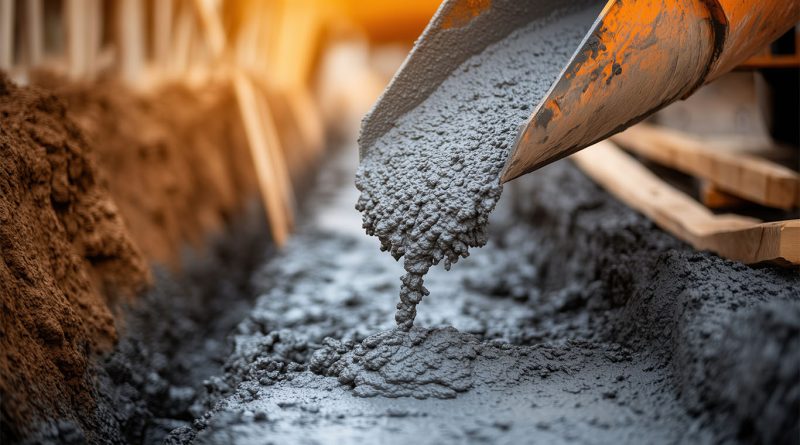Precast Concrete or Poured Concrete: Weighing the Pros and Cons for Your Foundation
When it comes to building a foundation, you have one of the most important decisions to make — whether to use precast concrete or poured concrete for foundations. Both methods have their place in residential and commercial construction, and understanding the strengths and weaknesses of each will help you make the right choice for your next project.
Poured Concrete Foundations
Poured-in-place concrete has been the traditional method for decades. With this approach, contractors build forms on-site, pour the concrete and let it cure in place.
Here are some of the key strengths of poured concrete foundations:
- Flexibility in design: Since it is poured on-site, poured concrete can be adapted to various layouts.
- Availability: Nearly every region has contractors experienced in poured concrete construction.
- Cost-effectiveness: In areas with lower labor costs and favorable weather, poured concrete may be less expensive up front.
On the other hand, you should also consider the common challenges that come with poured concrete:
- Weather dependency: Pouring on-site requires the right conditions. Rain, cold, or heat can cause delays or compromise quality.
- Curing time: Poured concrete foundations take time to cure before further construction can proceed.
- Moisture concerns: Without proper waterproofing, poured walls are prone to cracking and water infiltration.
Precast Concrete Foundations
Precast concrete, by contrast, is manufactured in a controlled environment, then transported and installed on-site. This process allows for tighter quality control and faster installation.
Let’s look at the main advantages of choosing precast foundations:
- Consistent quality: Factory production ensures uniform strength, proper curing and reduced risk of defects.
- Speed of installation: Panels can be installed in a single day, reducing labor costs and project timelines.
- Energy efficiency: Many precast systems are pre-insulated, which can improve thermal performance and reduce long-term energy costs.
- Durability: Reinforced and designed to resist moisture, precast walls are less prone to cracking and water damage.
- Design precision: Precast panels are engineered to exact specifications, allowing for accuracy that minimizes rework during construction.
That said, it’s worth noting the possible limitations you might face with precast systems:
- Transportation logistics: Panels must be delivered to the jobsite, which requires careful planning.
- Higher upfront cost: While long-term savings often offset this, precast foundations may initially cost more than poured-in-place alternatives.
Choosing Between Precast and Poured Concrete
When deciding between precast concrete or poured concrete for foundations, consider the scope of your project, local labor availability and long-term performance goals. Poured concrete can be suitable for simple projects in areas with reliable weather. Precast concrete, however, offers consistency, speed, and energy efficiency that can significantly improve both construction efficiency and building performance.
Superior Walls: A Leader in Precast Innovation
If you are leaning toward precast concrete, it helps to know that the industry has evolved far beyond basic panel systems. One example is Superior Walls, a company that has been advancing precast concrete foundation solutions since 1981.
Superior Walls foundations are produced in a controlled manufacturing environment and then installed on-site by certified crews. This approach minimizes weather delays and ensures high-dimensional accuracy. Their wall systems are engineered for durability, featuring reinforced concrete with built-in insulation that contributes to energy efficiency.
In practice, this method reflects the principles of modularity and prefabrication — manufacturing elements off-site for quick assembly on-site — which improves efficiency and supports the broader goals of a circular economy.
For builders and architects, Superior Walls offers advantages such as reliable scheduling, one-day installation and code-compliant performance. For homeowners, the benefits translate into dry, warm, and quiet basements that add valuable living space and long-term energy savings.
With an expanding network of licensed manufacturing facilities across the United States, Canada and even into international markets, Superior Walls continues to set a high standard for what modern foundations can deliver.
Building on a Strong Foundation
Your foundation is more than just the base of a building — it is the starting point for quality, durability and long-term performance. Choosing between precast concrete or poured concrete depends on project needs, but precast systems are proving to be a reliable and efficient alternative to traditional methods.
If you are looking for a foundation solution that combines structural integrity, speed and energy performance, exploring precast systems such as those offered by Superior Walls is a worthwhile step.
